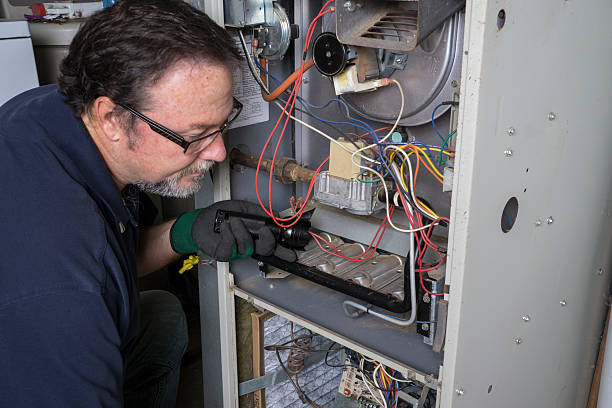In industrial environments like construction sites, warehouses, or workshops, maintaining a warm working temperature during the colder months is critical. Industrial heaters are a common solution for this, offering powerful and efficient heating in large, often drafty spaces. However, using industrial heaters indoors brings one crucial responsibility: ensuring proper ventilation.
Lack of ventilation when operating high-capacity heaters can lead to serious health and safety risks. Whether you’re using indirect-fired units, diesel-fueled blowers, or propane-powered machines, knowing how to ventilate the area properly is essential for protecting your team and maintaining equipment efficiency.
Understanding the Risks of Poor Ventilation
Many industrial heaters operate by burning fuel to generate heat. This process, whether using diesel, propane, or natural gas, can release byproducts like:
- Carbon monoxide (CO)
- Nitrogen dioxide (NO₂)
- Particulate matter
- Water vapor
Without proper airflow, these gases can accumulate indoors, creating potentially toxic conditions. Carbon monoxide is particularly dangerous because it’s odorless, colorless, and can be fatal in high concentrations.
Even if you’re using a top-tier model like Biemmedue Heaters, which are known for their quality and efficiency, neglecting ventilation can compromise safety and performance.
Why Industrial Ventilation Is Non-Negotiable
Here’s why ensuring ventilation should be a top priority when using industrial heaters indoors:
1. Protects Worker Health
Airborne pollutants can cause headaches, dizziness, respiratory problems, and in extreme cases, unconsciousness or death. OSHA and other regulatory bodies have strict guidelines around air quality for a reason: healthy workers are productive workers.
2. Prevents Moisture Build-Up
Combustion creates water vapor. In enclosed spaces, this leads to condensation on walls, ceilings, and equipment, which can cause rust, corrosion, or even mold growth over time.
3. Supports Combustion Efficiency
For fuel-burning heaters to work efficiently, they need fresh air for proper combustion. Poor airflow can result in incomplete fuel burning, higher emissions, and lower heater performance.
4. Reduces Fire and Explosion Risk
Trapped gases in confined spaces can become a fire hazard. Proper airflow disperses these gases and reduces the risk of ignition from sparks, static, or equipment malfunctions.
Best Practices for Indoor Heater Ventilation
Ensuring safe heater use doesn’t require overhauling your entire space, just thoughtful planning and regular monitoring. Here are some practical strategies:
Use Heaters Designed for Indoor Use
Choose indirect-fired heaters, which have a sealed combustion chamber and separate the exhaust gases from the heated air delivered to the space. Models from trusted brands like Biemmedue Heaters are often built with indoor use in mind, offering external flue connections and high-performance air circulation.
Create Fresh Air Intake and Exhaust Outlets
Make sure there is a constant supply of fresh air to the heater and that combustion byproducts are vented outdoors. This may involve opening doors/windows or installing dedicated ducts and flues.
Monitor Air Quality
Install CO and gas detectors in any space where fuel-based heaters are used. Regularly check oxygen levels and air movement, especially in lower-ventilated areas.
Match Heater Output with Space Requirements
Avoid using oversized heaters in small spaces, which can lead to overheating and inadequate air exchange. Consult professionals or refer to manufacturer guidelines to find the right size heater for your application.
Pair with Reliable Power Sources
If you’re using diesel-powered heaters in remote or off-grid locations, pair them with dependable generators like the Yanmar Diesel Generator. These generators are known for consistent, fuel-efficient power delivery and can help maintain safe operation of heaters and ventilation systems alike.
The Role of Distributors in Safe Heater Use
Choosing the right equipment and using it safely often starts with expert guidance. A knowledgeable distributor can recommend heater models best suited for your space, offer training on proper setup, and provide long-term maintenance support.
At Cantherm Distributors, the focus isn’t just on selling heaters; it’s on ensuring your heating solutions perform reliably and safely, no matter the conditions. With a full range of industrial heaters, ventilation accessories, and power equipment, they help businesses stay warm without compromising on safety.
Conclusion
Industrial heaters are essential in many work environments, but they must be used responsibly, especially when operating indoors. Proper ventilation isn’t just a box to check for compliance; it’s a core part of ensuring safety, protecting equipment, and promoting worker health.
From advanced models like Biemmedue Heaters to power solutions like the Yanmar Diesel Generator, choosing the right equipment is only part of the equation. How you install, operate, and ventilate these systems will determine your long-term success.
Partnering with a trusted source like Cantherm Distributors gives you the confidence that your indoor heating setup is not only efficient but also safe.






